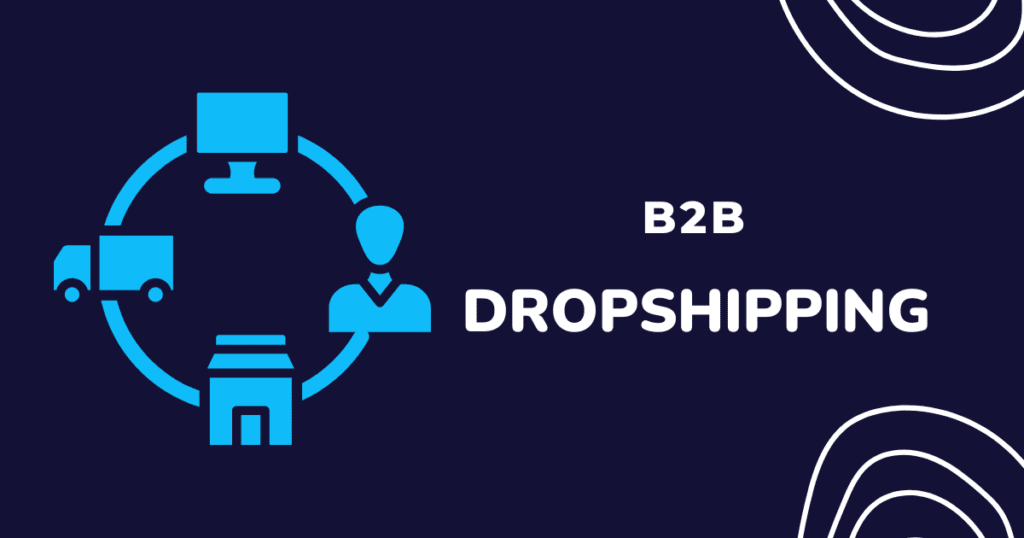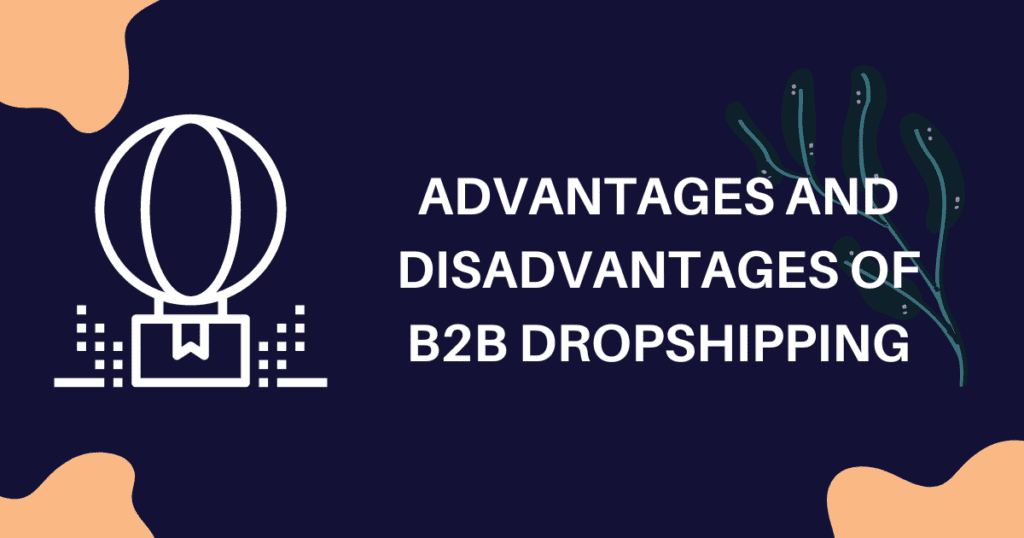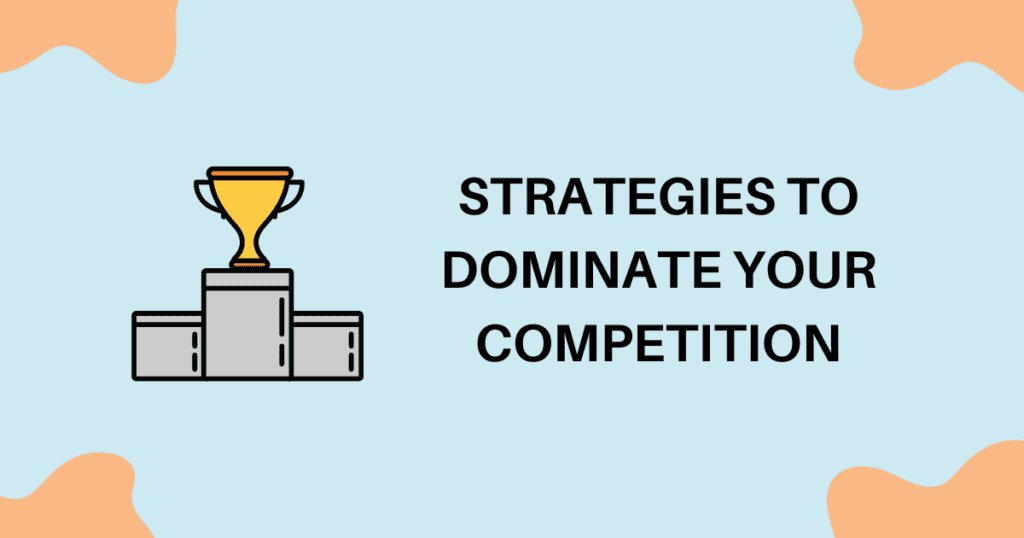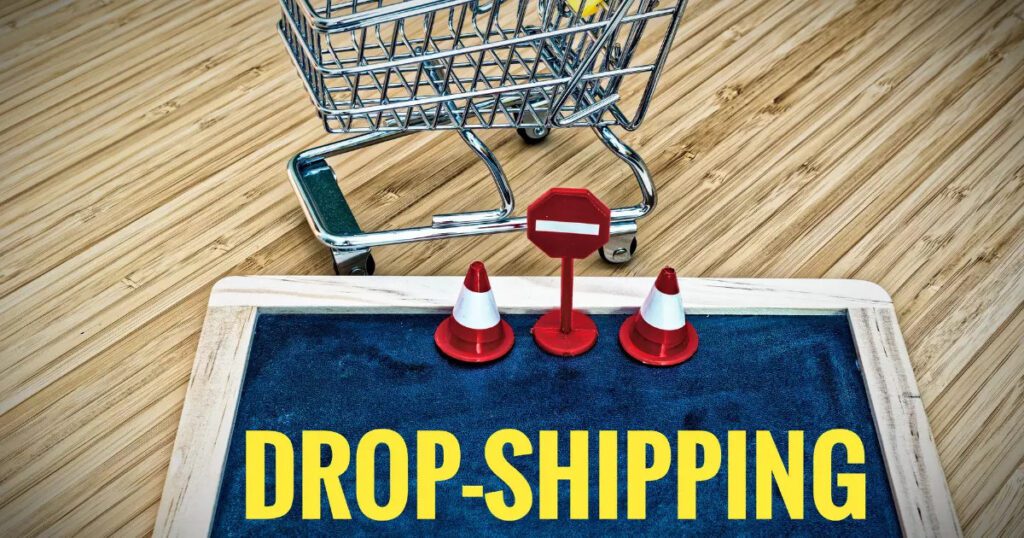Want to crack the B2B market? Our thorough guide will help you do that. You’ll learn how to take your B2B dropshipping business to the next level in 2024. Discover the most recent strategies and tactics for building a strong brand, optimising your website, leveraging the power of social media and email marketing, and staying ahead of the curve by leveraging data and analytics. With our expert insights and practical advice, you can acquire a competitive advantage and achieve long-term success in the fast-paced world of B2B dropshipping. Let’s begin.
Table of Contents
What is B2B Dropshipping?

B2B dropshipping is a part of ECommerce. It is a business strategy in which a merchant or the dropshipper accepts customer orders but does not stock the items. Instead, the dropshipper buys things from a supplier or manufacturer, who then sends them to the client. This allows the dropshipper to run a business without incurring the costs and hazards of inventory management, while also allowing the supplier to access a wider spectrum of customers through the drop shipper’s marketing and sales activities.
Advantages and Disadvantages of B2B Dropshipping

Let’s talk about the advantages and disadvantages of B2B Dropshipping before we talk about the strategies:
Pros:
- Businesses can decrease storage, handling, and administrative costs by outsourcing inventory management.
- Businesses can also reduce their financial risk, particularly when it comes to faulty products.
- In the absence of logistics, shipping times are reduced (as long as flows are properly managed and the supplier network is reliable).
- When compared to traditional distribution methods, businesses can sell a broader range of products.
Cons:
- Control over the supply chain is limited, including shipment timeframes and product quality.
- Higher product prices as a result of the necessity to pay shipping and handling fees.
- Increased reliance on suppliers and their capacity to fill orders on time.
- Increased competition as more dropshippers flock to the low barrier to entry.
- Customer dissatisfaction is possible as a result of shipment and quality difficulties.
Strategies to Dominate your competition

Here are some of the most effective strategies to dominate your competition in the b2b market:
1. Analyze the market
Analysing the market involves studying your target audience, understanding their wants, and spotting industry trends and opportunities. This allows you to make more educated business decisions and stay ahead of the competition.
2. Identify Unique Value Proposition
Determine Your Unique Value Proposition: Your unique value proposition (UVP) is what distinguishes you from the competition and explains why customers should choose you. Identifying and emphasising your unique selling proposition (USP) is critical for building a strong brand image and attracting clients. For this, you can read our blog on the Best Dropshipping Business Ideas.
3. Build the brand image
Create a powerful brand image by creating a clear brand identity, which includes your business name, logo, and messaging. Consistent branding across all media contributes to customer trust and awareness.
4. Optimize your Website
Optimising your website entails making sure it is user-friendly, visually appealing, and search engine-optimised. This aids in attracting and retaining visitors, as well as improving your search engine rankings.
5. Harness the Power of Social Media
Social media is a great tool for increasing brand awareness, engaging customers, and generating traffic to your website. Creating a strong social media presence and producing relevant material will assist you in reaching new clients and retaining existing ones.
6. Email Marketing
Email marketing includes sending email campaigns to new and existing consumers. This is an efficient method for establishing relationships, promoting products, and increasing sales.
7. Content Marketing in Dropshipping b2b sector
Content marketing in the Dropshipping b2b industry entails developing and sharing valuable information in order to attract and engage your target audience. Blog entries, videos, and social media content are all examples of this. Content marketing can help you position yourself as an industry thought leader and attract traffic to your website.
8. Customer Support
Building trust and loyalty with your consumers requires providing exceptional customer assistance, which includes reacting quickly to enquiries and fixing difficulties.
9. Collaboration with established brands
Working with well-known brands can help you reach new audiences and develop a reputation in your industry. Partnerships, sponsorships, and guest articles on established websites or social media channels are examples of this.
Setting up a dropshipping business

In our previous blogs, we have talked about what is dropshipping and how it works. Here is a quick summary of how to set up your dropshipping business:
- Choose a profitable niche and locate profitable products.
- Find a reputable supplier who provides dropshipping services.
- Create an online store with an e-commerce platform.
- Add new products and improve the descriptions, photos, and prices.
- Provide customers with payment and delivery choices.
- Create a marketing strategy to promote your company.
- To foster trust and loyalty, provide great customer service.
- Monitor and optimise your strategy on a regular basis depending on client feedback and market changes.
Best B2B Dropshipping suppliers to consider
There are many dropshipping suppliers and websites to consider when it comes to B2B Dropshipping. These are some of the best dropshipping suppliers and websites in the market, including Blinkstore, IndiaMART, TradeIndia, Shopify, Jim Trade, Wholesale Box, Baapstore, SaleHoo, etc. These platforms offer access to a variety of products at competitive prices, connect buyers with suppliers and manufacturers, and provide e-commerce tools for setting up and managing an online store. By utilizing these platforms, you can find reliable suppliers and products to start and grow a successful dropshipping business. To read more about them in detail, you can read our blog on Best Dropshipping Suppliers in India.
Conclusion
In conclusion, dropshipping has emerged as a popular business strategy for entrepreneurs seeking to launch an online business with low start-up expenses and few risks. You can outperform your competition and flourish in the B2B dropshipping business by collaborating with trusted suppliers and implementing effective techniques like as developing a strong brand, optimising your website, and leveraging the power of social media and email marketing. You may locate great products to sell and expand your business with the support of the best dropshipping suppliers and websites, such as those listed above. Hopefully, after reading this article you can start B2B Dropshipping easily and book profits. We wish you good luck!
FAQs
What exactly is B2B dropshipping?
B2B dropshipping is a business concept in which a retailer collaborates with a supplier to sell goods to other companies. The retailer does not keep inventory and instead orders things as needed from the supplier, who then sends them directly to the retailer’s consumers.
How can I locate trustworthy dropshipping suppliers?
You can study and compare various platforms and marketplaces, read reviews and ratings from other users, and contact providers directly to ask questions and measure their responsiveness and reliability.
What are the benefits of business-to-business dropshipping?
Low start-up expenses, minimum inventory management, access to a wide choice of items, and the potential to scale quickly are all advantages of B2B dropshipping.
What are the drawbacks of business-to-business dropshipping?
Lower profit margins, little control over product quality and shipping procedure, and the potential for increased competition due to low barriers to entry are all downsides of B2B dropshipping.
How do I start a dropshipping company?
To start a dropshipping business, you must first select a speciality, then do research and discover dependable suppliers, create an e-commerce website or leverage an existing platform, and then implement marketing and sales techniques to attract clients and expand your business.
Is a website required to start a dropshipping business?
While a website is recommended for a professional and efficient dropshipping business, some marketplaces and platforms allow you to sell products without a website.
What are some good B2B dropshipping techniques for conquering the competition?
Identifying a distinctive value proposition, developing a strong brand, optimising your website for search engines and user experience, utilising social media and email marketing, and offering good customer service are all effective techniques for topping the competition in B2B dropshipping.
What role does customer service play in B2B dropshipping?
Customer service is critical in B2B dropshipping to develop trust and loyalty with your clients, resolve enquiries and complaints, and assure fast and accurate product shipping and delivery.
How can I improve the conversion rate of my B2B dropshipping website?
You can improve your website performance, design, navigation, and checkout process, as well as employ search engine optimisation (SEO) and conversion rate optimisation (CRO) tactics, to optimise your website for greater conversions in B2B dropshipping.
Can I sell branded items via B2B dropshipping?
Branded products for dropshipping may be available based on the supplier and brand restrictions. Before selling branded products via dropshipping, it is critical to check with the supplier and review the brand’s policies.
